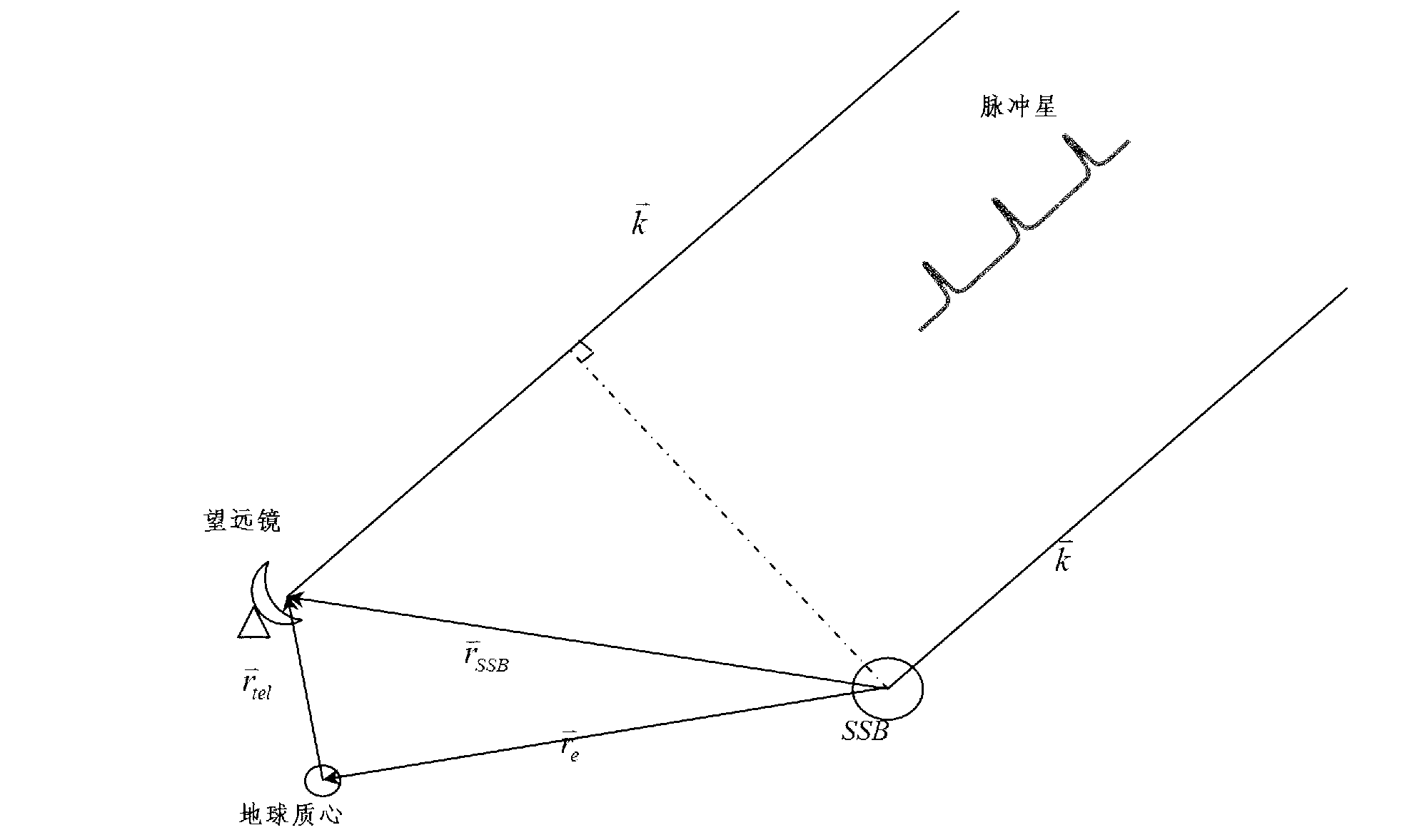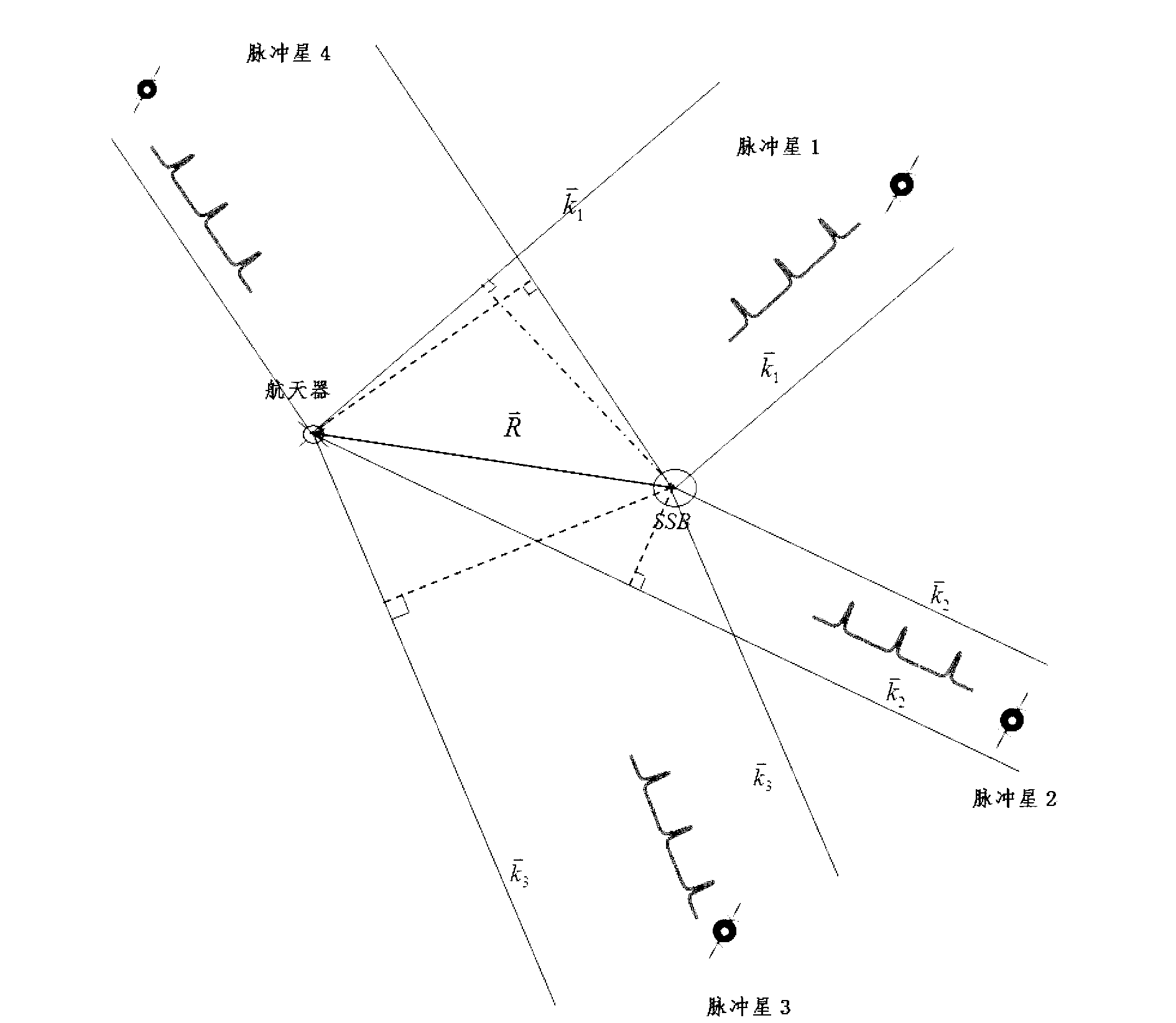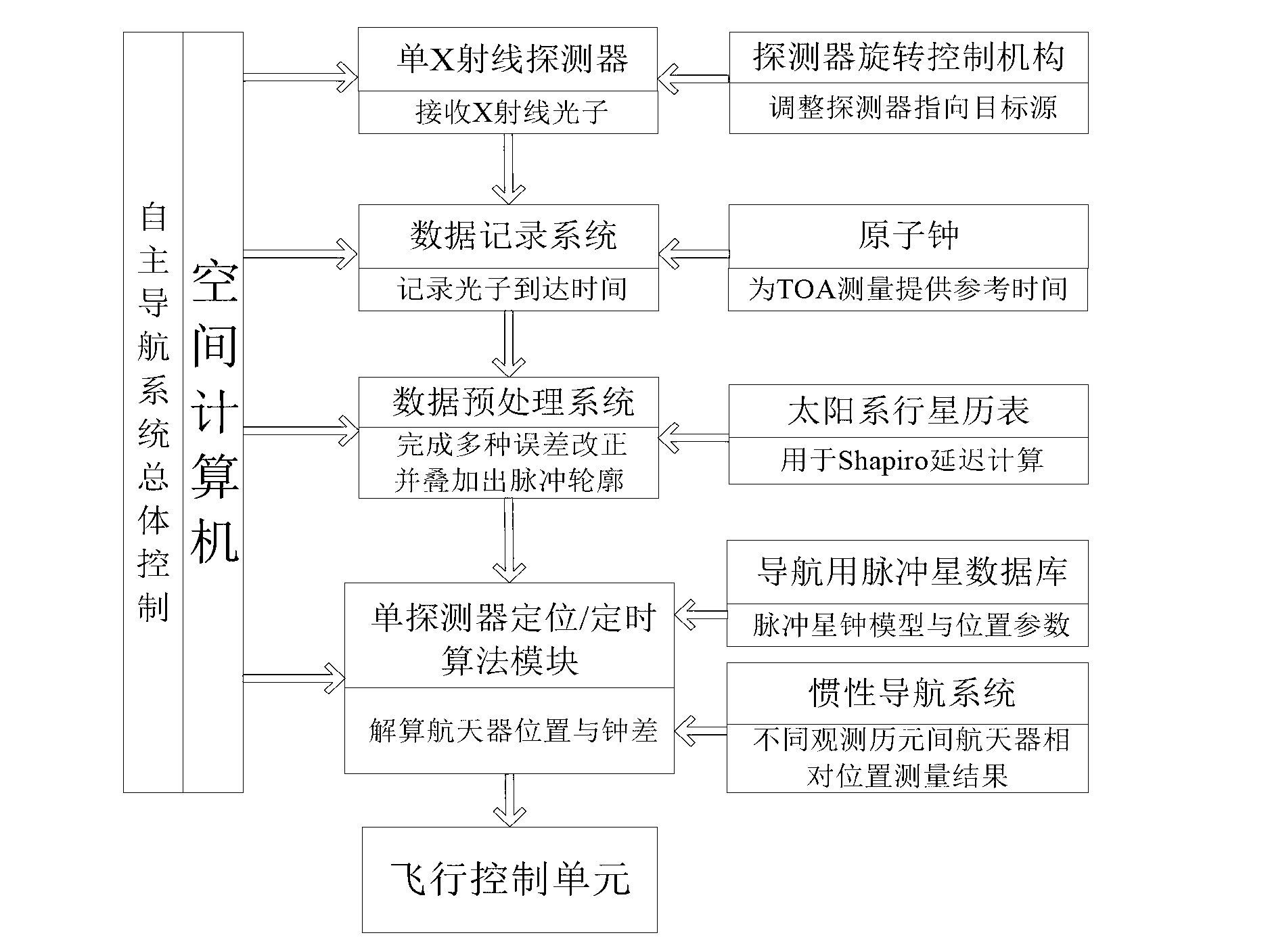Pulsar navigation method with single detector
A pulsar navigation, single-detector technology, applied in the direction of combined navigator, etc., can solve the problems of difficult implementation, large load and high cost
- Summary
- Abstract
- Description
- Claims
- Application Information
AI Technical Summary
Problems solved by technology
Method used
Image
Examples
Embodiment Construction
[0058] The present invention comprises the following steps:
[0059]Step 1: According to the preset observation sequence, the X-ray detector on the spacecraft observes four millisecond pulsars in sequence. The observation process of each pulsar is as follows: the X-ray detector receives the X-ray photons from the observation target, combines with the on-board atomic clock to measure the moment when the photons arrive at the detector, and saves the original observation data of the arrival time;
[0060] Step 2, using the estimated values of the position and velocity of the spacecraft to correct the Doppler effect, relativistic effect, and Shapiro delay of the original observation signal;
[0061] Step 3: On the basis of completing the preprocessing of the original observation signal, the observation signal is superimposed according to the rotation period of the observed pulsar to give a clear pulse profile, and then the arrival time of the reference point of the pulse profile...
PUM
 Login to View More
Login to View More Abstract
Description
Claims
Application Information
 Login to View More
Login to View More - R&D
- Intellectual Property
- Life Sciences
- Materials
- Tech Scout
- Unparalleled Data Quality
- Higher Quality Content
- 60% Fewer Hallucinations
Browse by: Latest US Patents, China's latest patents, Technical Efficacy Thesaurus, Application Domain, Technology Topic, Popular Technical Reports.
© 2025 PatSnap. All rights reserved.Legal|Privacy policy|Modern Slavery Act Transparency Statement|Sitemap|About US| Contact US: help@patsnap.com



